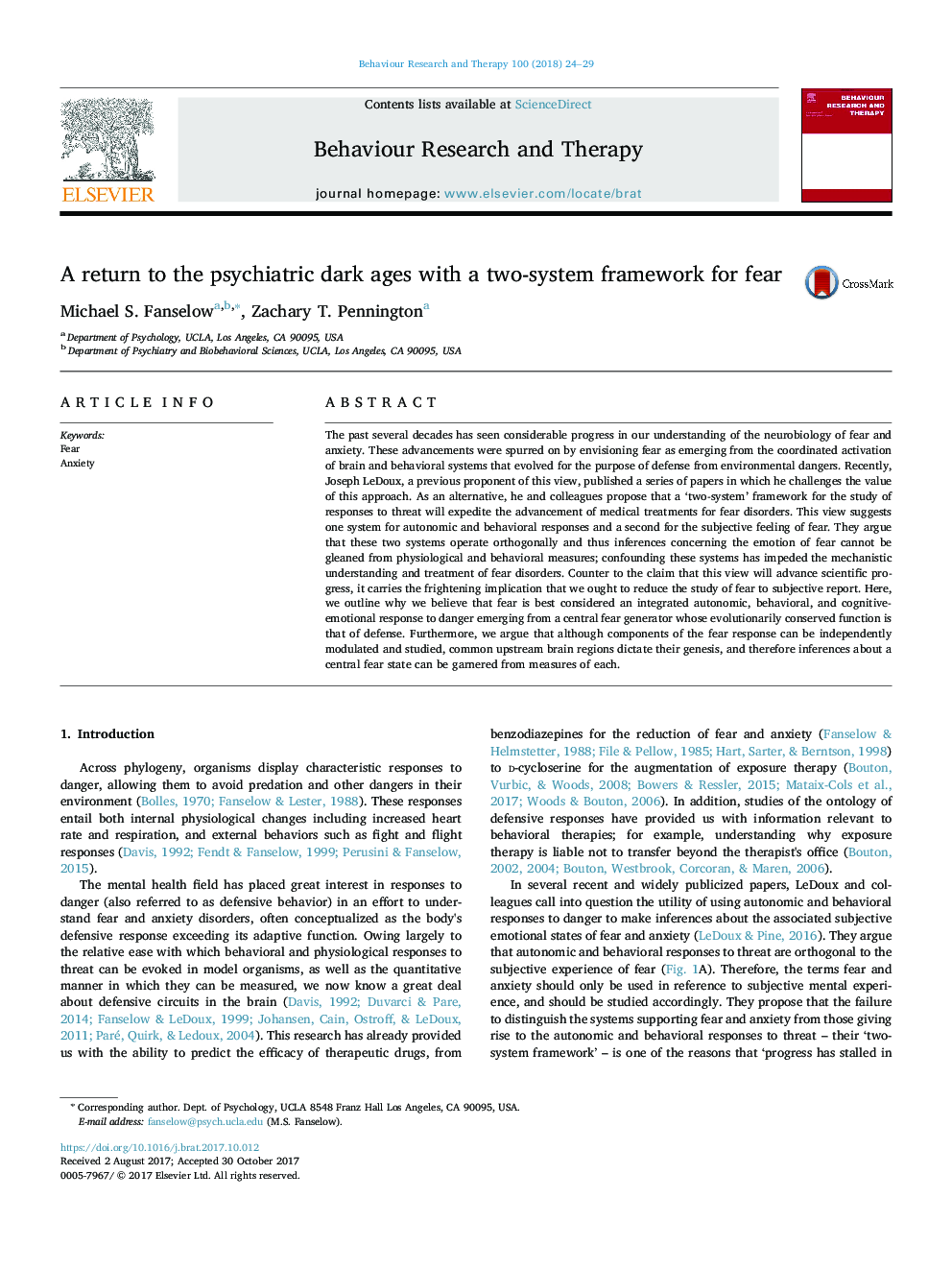| Article ID | Journal | Published Year | Pages | File Type |
|---|---|---|---|---|
| 7261940 | Behaviour Research and Therapy | 2018 | 6 Pages |
Abstract
The past several decades has seen considerable progress in our understanding of the neurobiology of fear and anxiety. These advancements were spurred on by envisioning fear as emerging from the coordinated activation of brain and behavioral systems that evolved for the purpose of defense from environmental dangers. Recently, Joseph LeDoux, a previous proponent of this view, published a series of papers in which he challenges the value of this approach. As an alternative, he and colleagues propose that a 'two-system' framework for the study of responses to threat will expedite the advancement of medical treatments for fear disorders. This view suggests one system for autonomic and behavioral responses and a second for the subjective feeling of fear. They argue that these two systems operate orthogonally and thus inferences concerning the emotion of fear cannot be gleaned from physiological and behavioral measures; confounding these systems has impeded the mechanistic understanding and treatment of fear disorders. Counter to the claim that this view will advance scientific progress, it carries the frightening implication that we ought to reduce the study of fear to subjective report. Here, we outline why we believe that fear is best considered an integrated autonomic, behavioral, and cognitive-emotional response to danger emerging from a central fear generator whose evolutionarily conserved function is that of defense. Furthermore, we argue that although components of the fear response can be independently modulated and studied, common upstream brain regions dictate their genesis, and therefore inferences about a central fear state can be garnered from measures of each.
Related Topics
Health Sciences
Medicine and Dentistry
Psychiatry and Mental Health
Authors
Michael S. Fanselow, Zachary T. Pennington,
